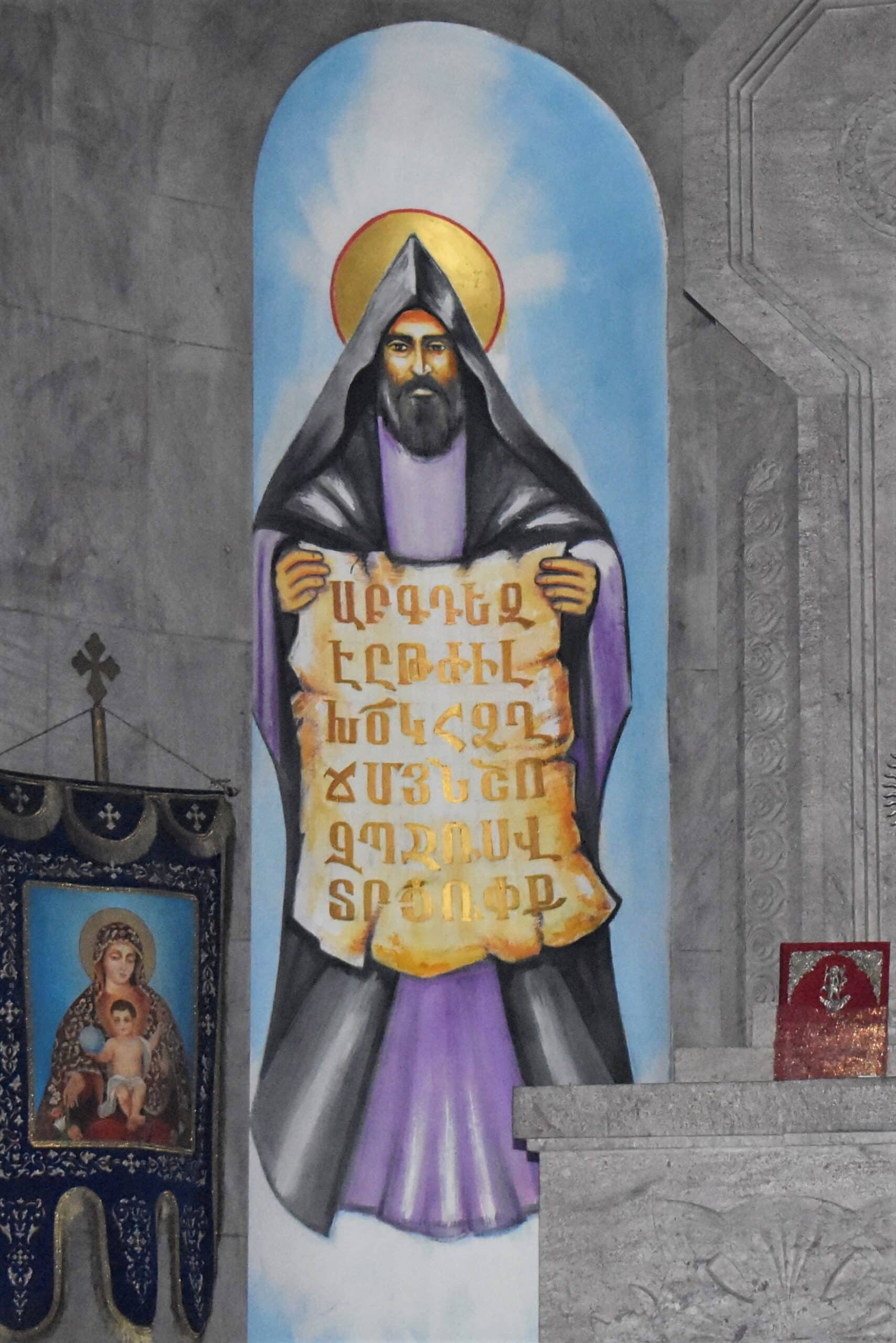The First Letter of Christ and the Last Letter of Armenia

The letter ք (k’), called քէ (ke), is the last of the 36-letter alphabet created by St. Mesrob Mashdots in the early fifth century A.D. As it is well known, the letters o and ֆ were added to the alphabet in the late Middle Ages.
The pronunciation of this letter is a bit problematic in Western Armenian. The loss of aspiration of the consonants (the pronunciation of ք should be something like the k in kite) has led us to not differentiate between ք and գ (kim), a problem that is also present in the pairs փ (piur)-բ (pen) and դ (ta)-թ (toh). We will use the transliteration k’, which is utilized in scholarly texts, to show that phonetic difference in writing.
It was certainly fitting that the last letter of the alphabet was the one used to write the name of Christ: Քրիստոս (K’ristos). The passage of Revelation 1:8, “I am the Alpha and the Omega” (omega is the last letter of the Greek alphabet) was translated into Classical Armenian as the equivalent «Ես եմ Այբ եւ ես եմ Քէ». As a matter of fact, the letter Ք is equivalent to the Greek Χ (Χριστος) and, indeed, to the ch used in words such as Christopher (Քրիստափոր), chrysantemus(քրիզանթեմ), chronicle(քրոնիկ). When German physicist Wilhelm Röntgen discovered X-rays in 1895, the equivalence between ք and the Greek Χ led to translate the word X-ray as «Ք ճառագայթ» (K jarakayt) in Armenian.
Most interestingly, this letter had a double function in Classical Armenian (krapar). It served as a plural suffix. For instance, the plural of the word գիր(kir) “letter” was kirk’ (“letters”) and this created in time the word kirk’ (“book”). In Modern Armenian (ashjarhapar), the function of the k’ was mostly taken up by the suffixes –ner and –er; thus, today we say kirk’er (“books”), where the root is kirk’ and there is no longer awareness of k’ being a plural suffix.
However, this does not always work. One way or another, krapar is always alive in our current usage of ashjarhapar. There are some words used in plural interchangeably with the suffix k’ or the suffixes er/ner; however, we cannot (we should not) use both of them together. For instance, we say dghak’ or dghaner (“boys”); it is grammatically incorrect to say dghak’ner.
This plural use of the k’ gave birth to its use as a suffix for place names. For instance, the plural of hay “Armenian” was hayk’ (“Armenians”), and this became the name of the country of the Armenians: Hayk’ (Հայք). Thus, throughout history we have used the words Medz Hayk’ (Մեծ Հայք) and P’ok’r Hayk’ (Փոքր Հայք) to designate “Greater Armenia” and “Lesser Armenia.” Additionally, we should remember that every time we use the word hayots (հայոց), as in hayots badmoutioun, we are using krapar: hayots is the declined form of hayk,’ and hayots badmoutioun is the standard way to say “history of the Armenians” (in krapar, it also meant… “History of Armenia”).
